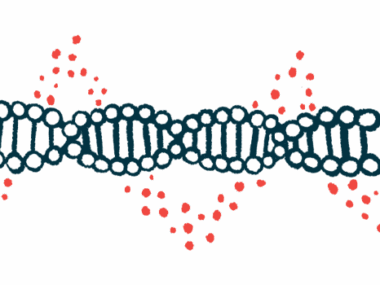Later, Less Severe Form of CMT Disease Linked to HSPB1, MPZ Genes
Written by |

Some patients with Charcot-Marie-Tooth (CMT) disease may experience mild to moderate muscle weakness in the lower limbs as a first symptom that begins during adulthood and is maintained over the course of the disease, an Italian study found.
Researchers observed that the findings were linked to mutations in two genes, HSPB1 and MPZ, previously known to cause the disease.
This clinical presentation differed from the classical forms of the disease. Usually, symptoms first appear in adolescents and young adults.
The study, “Genetic workup for Charcot–Marie–Tooth neuropathy: A retrospective single-site experience covering 15 years,” was published in Life.
Symptoms and the age when they begin depend on the type of CMT disease. The surest method for CMT diagnosis is a genetic test for the known disease-causing mutations.
“Genetic diagnosis in CMT has evolved rapidly in recent years with the introduction of next-generation sequencing (NGS) into routine diagnostic practice,” the researchers wrote.
However, the frequency of disease-causing mutations may vary from country to country, and data from different countries are needed to improve the workup for the diagnosis of CMT disease.
“We describe our diagnostic experiences as a multidisciplinary outpatient clinic, combining a gene-by-gene approach or targeted gene panels based on clinical presentation,” the research team said.
The scientists looked at data of 585 patients (including 99 familial and 348 isolated cases) from the neuromuscular center of the University of Genova between 2004 and 2020. Their mean age was 53, ranging from 13 to 94.
All patients were evaluated by a multidisciplinary team. A neurologist and medical geneticist looked at family history, performed clinical and neurophysiological examinations, and planned the workup for a diagnosis. The neurologist managed any treatments and the medical geneticist helped the patients understand the implications of a genetic test. A physical medicine and rehabilitation doctor worked together with an orthopedic technician and a physiotherapist in order to customize physical therapies, orthotics and prosthetics, and exercise recommendations.
A neurophysiology examination revealed features consistent with loss of the myelin sheath (the insulating layer covering the nerves) in 290 patients (64.9%) or damage to nerve fibers in 157 patients (35.1%).
A genetic diagnosis was made in 391 patients (66.8%), including 277 index cases (79 familial and 198 isolated cases). An index case is the first documented case of a condition or mutation in a family.
The most common types of CMT disease were CMT1A caused by an extra copy of the PMP22 gene (48.4%); HNPP caused by a deletion of the PMP22 gene (14.4%); CMT1X caused by mutations in the GJB1 gene (12.6%); P0-related neuropathies caused by mutations in the MPZ gene (6.8%); and CMT2A caused by mutations in the MFN2 gene (5.0%). The remaining patients carried changes in more rarely mutated genes, including HSPB1 (3% of all index cases).
NGS was performed for 44 patients. In 10 of these patients, a genetic diagnosis was made. The remaining 34 participants did not receive a genetic diagnosis.
This means that one-third of the patients (194, or 33%) were left without a genetic diagnosis. “Most of the undiagnosed cases have been studied with a gene-by-gene approach, with a mean of four genes studied for each patient (minimum one, maximum nine) on the basis of diagnostic algorithms,” the scientists wrote.
Next, the researchers focused their attention on patients carrying mutations in either HSPB1 or MPZ. Their proportion was relatively high, they noted.
Some of these patients had “a peculiar phenotype [observable traits] characterized by clinical onset after the third decade, initial exclusive or highly prevalent lower limb involvement, and mild to moderate severity,” the researchers wrote.
Exclusive involvement of the lower limbs in the earlier stages of the disease was found in five out of nine patients (55.6%) carrying HSPB1 mutations, and in 12 out of 15 patients (80%) with late-onset disease-causing MPZ mutations.
None of the patients had severe symptoms. Most had mild symptoms with a mean disease duration of 14.2 to 16.0 years.
“The diagnosis strategy should be flexible and tuned to the clinical features of the patient in order to select the best molecular approach for each patient,” the researchers said. “The collaboration of a multidisciplinary team provides better outcomes for patients.”






